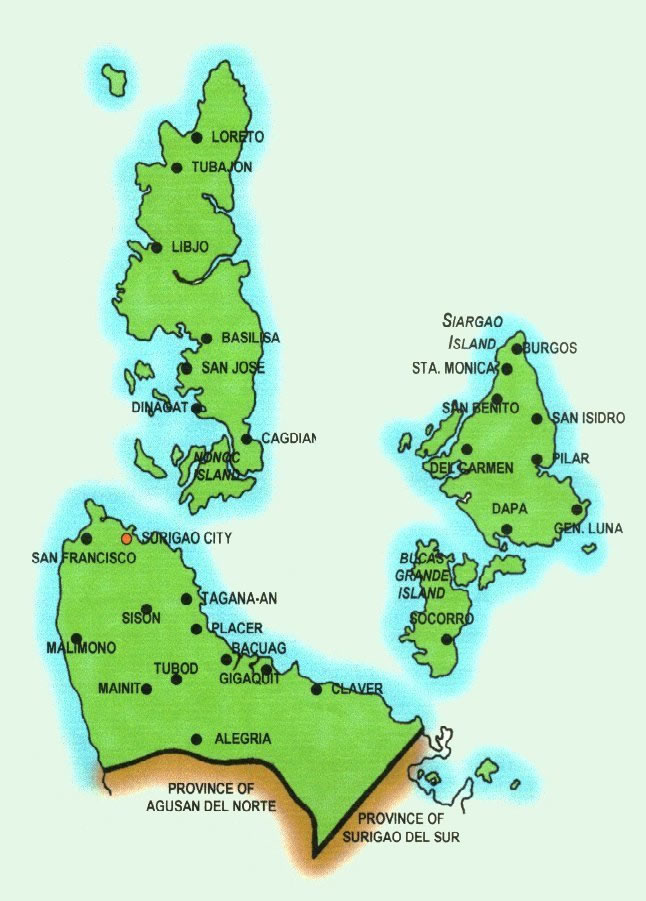History of the City of Surigao
 |
| Surigao City Map |
The City of Surigao nestles along the northernmost tip of the Province of Surigao del Norte where mountains and hills are prominent indentions throughout the coast. It is bounded on the north and east by the Hinatuan Passage, on the west by the Surigao Strait, and on the south by Tagana-an.
The city has a land area of 245.34 square kilometers and a population of 35,855 inhabitants in 1970. It has an ideal port which is shielded by the Nonoc Islands. It is also connected with good roads to Butuan City in Agusan del Norte, and Lianga in Surigao del Sur.
Legendarily, the town of Surigao was a thriving settlement ruled by Chief Solibao. When the Spaniards came, they called the place “Surigao”, but during the arrival of early Christian missionaries in the province, it was better known as “Caraga,” from the name of its inhabitants – the “Caragas” of the Visayan stock – warlike, brave and ferocious.
The settlement of the early colonizers in Bilang-bilang harbor, where the present city is located, became ideal centers of trade, commerce and religion. The village had been transferred from one place to another. On June 29, 1655, Surigao became a town and by 1751, it was made the seat of the provincial government, after Caolo, the former provincial capital, was burned. Since then, town of Surigao became a center of Spanish political and ecclesiastical power in the region, rivaled only by Tandag on the southern coast of Surigao Province.
The town suffered severely from Muslim raids. In 1752, after the town was devastated, almost all of its 2,000 inhabitants were either killed or taken as slaves by the Muslims.
During World War II, on May 23, 1942, the Japanese Imperial Forces under Captain Yusee occupied Surigao. The local government was then managed by Mayor Amat. Later, after the American planes bombed Bilang-bilang harbor on September 9, 1944, the American troops and guerrilla units forced the Japanese forces to withdraw until Surigao was liberated on April 12, 1945.
In July 1945, the Philippine Civil Affairs Unit (PCAU) took over the local government, prior to the restoration of the administration to the local authorities.
During the Commonwealth period, Protolico Egay was appointed by the guerrillas as governor of Surigao Province and Macario Diaz, who resumed his office on September 1, 1945, as mayor of the town of Surigao. He was succeeded by the guerrilla-appointed mayor, Juan Parrucho.
By virtue of Republic Act No. 2786, dated June 19, 1960, the old Province of Surigao was divided into Surigao del Sur and Surigao del Norte, with the Municipality of Surigao as the capital of the latter. Surigao became a chartered city under Republic Act No. 6134, which was approved on August 31, 1970.
Surigao City is noted for its proximity to the almost fathomless underwater gorge, the “Philippine Deep”, which is one of the deepest portions in the Pacific Ocean, including all other oceans in the world.



